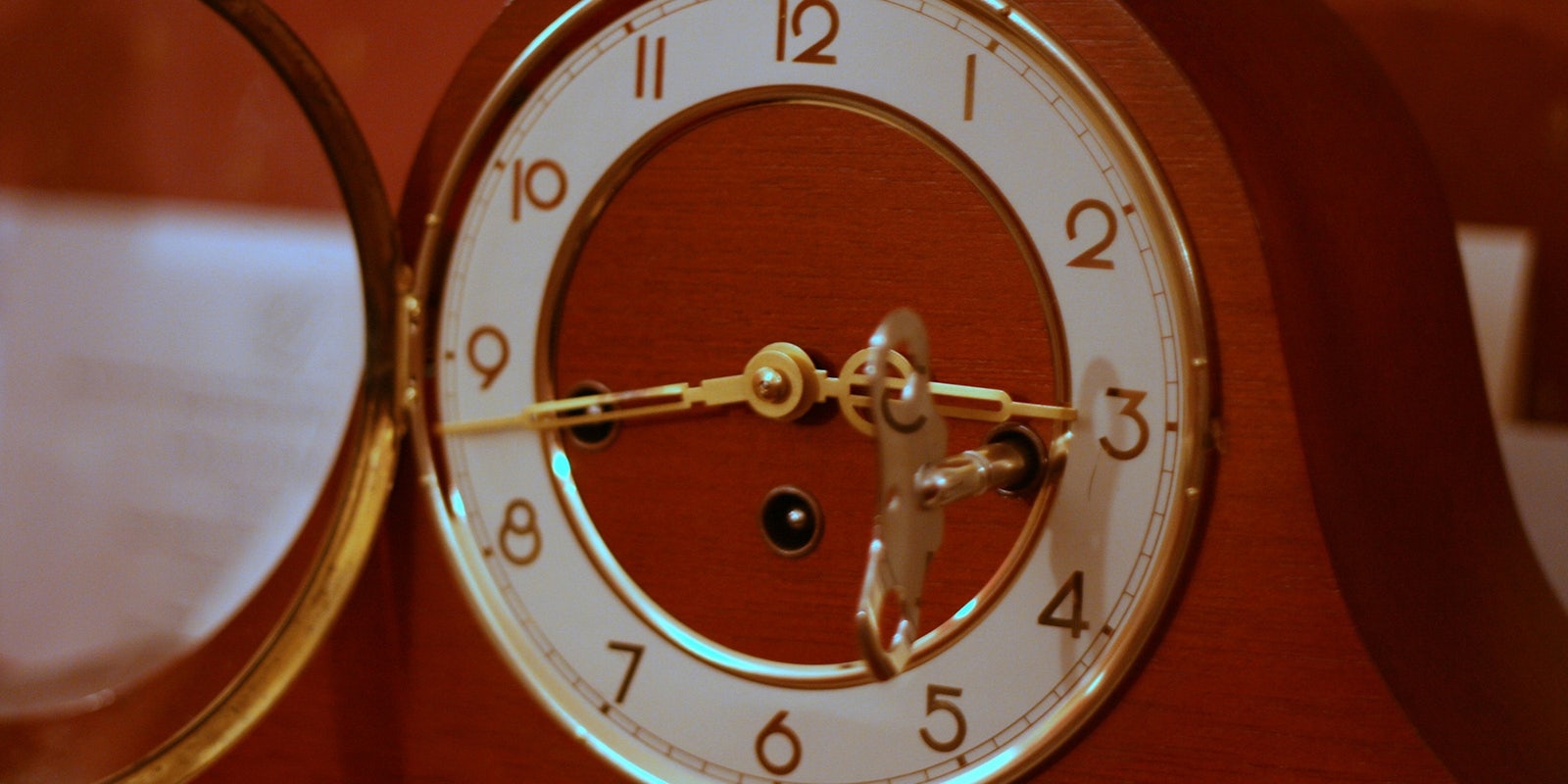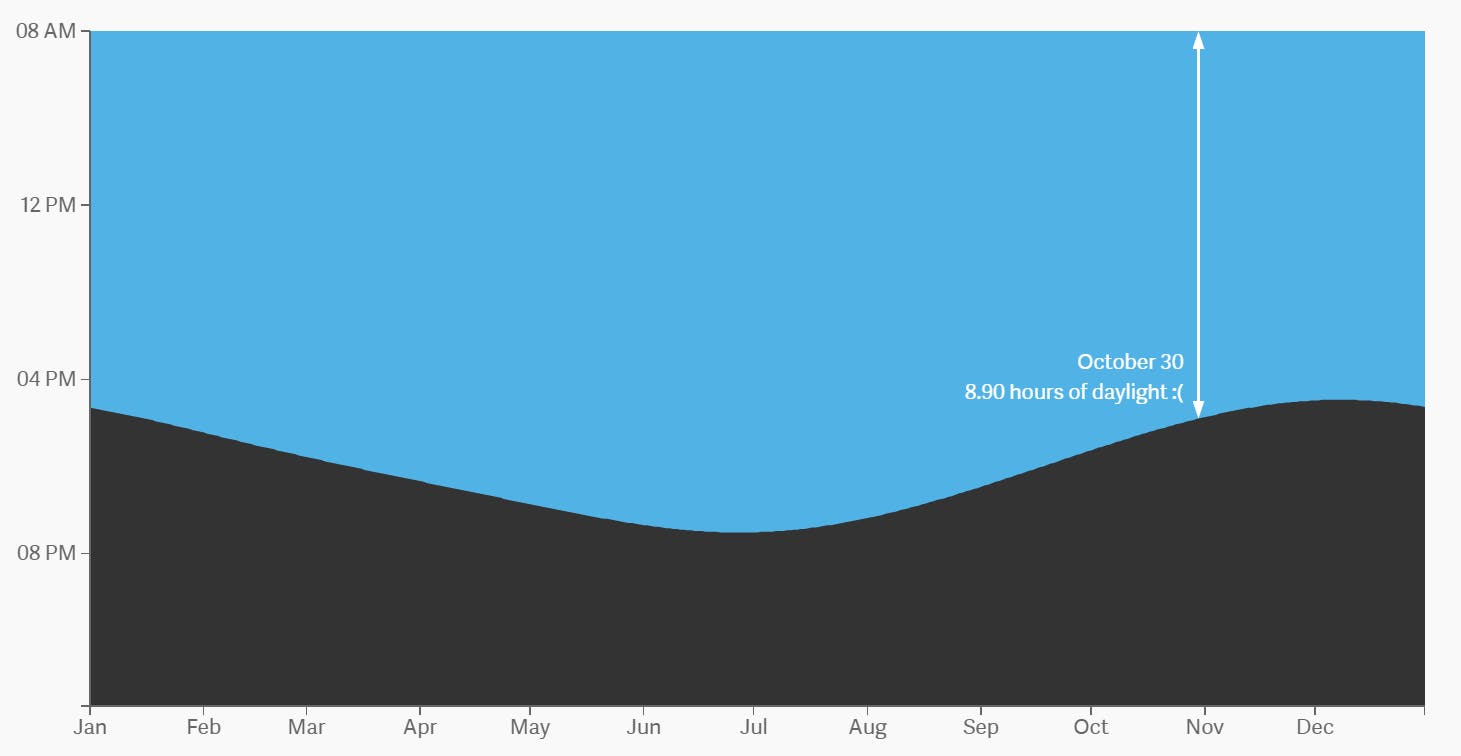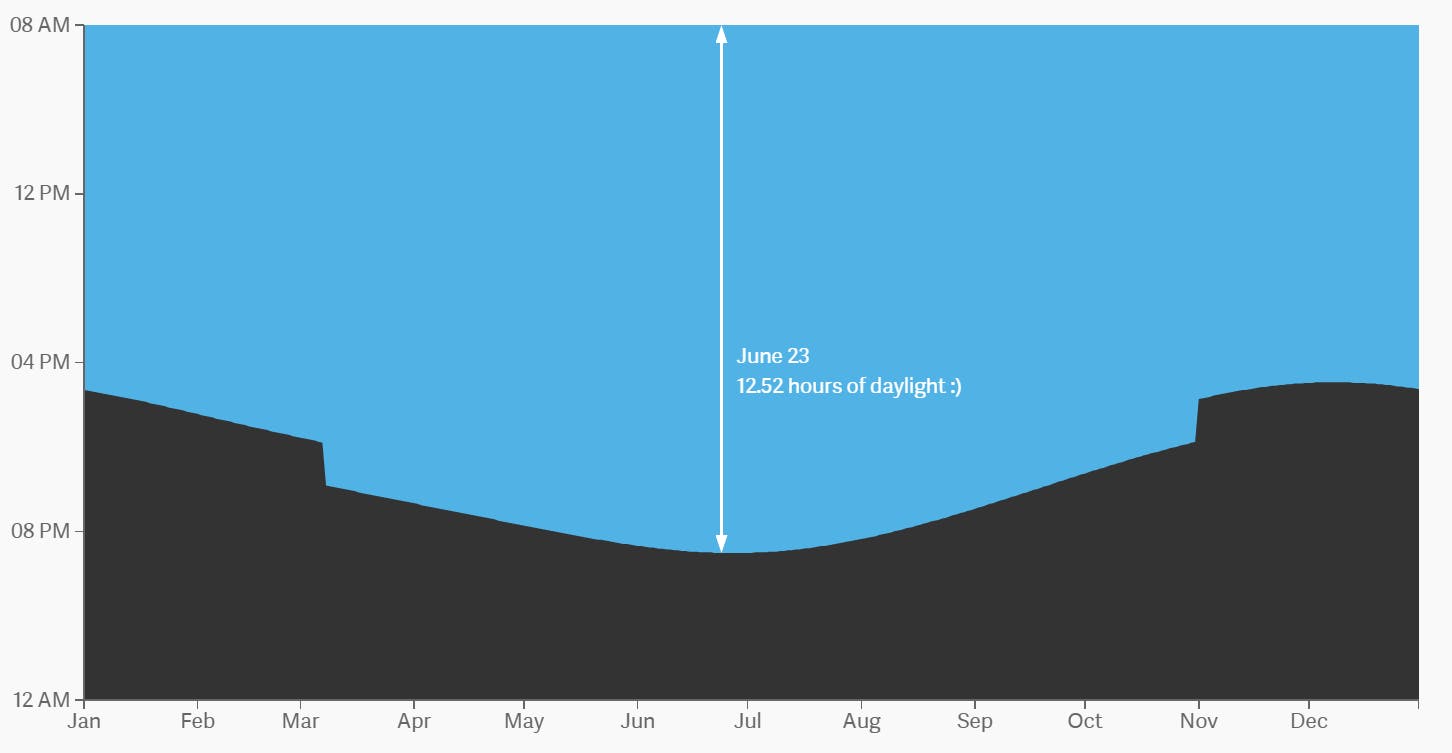Now that daylight saving time has wrapped up for the year, your body will probably take a bit of time to make the adjustment, but how much sunlight are you actually stealing thanks to the annual change?
If the time adjustment still confuses the heck out of you—do I gain or lose sleep? Am I late for my morning meeting, or what?—Quartz created an interactive visualization of what an entire year’s worth of daylight and darkness looks like in the U.S., with or without D.S.T.
The tool adjusts and tells you how much daylight is actually saved by the practice depending on the time you wake up and go to bed. It also has a D.S.T. button that lets you compare sun time for both scenarios. Here’s what it looks like for someone who’s awake from 8am to midnight, now that D.S.T. is over:
Without daylight saving, you’d soak in 3,661 (80 percent) of the available 4,568 hours of daylight each year on your current sleep schedule. (That’s 238 fewer hours of sun than you get with daylight saving.)
Hovering over the graph will show you the amount of daylight hours. For the graph above, every day is accompanied by a frown, suggesting that without D.S.T., you’re not getting maximum Vitamin D. Upon clicking on the “Reinstate D.S.T.” button, however, you get a few smileys:
With daylight saving, you soak in 3,899 (85 percent) of the available 4,568 hours of daylight each year on your current sleep schedule. (That’s 238 more hours of sun than you’d get without daylight saving.)
While these graphs are nifty and great at plainly explaining how the time shifts our sleeping schedules, they don’t really take back the fact that we now have shorter days ahead of us. If you’re hoping for more clarity on the subject, check out John Oliver’s hilarious segment on how D.S.T. is still a thing.


